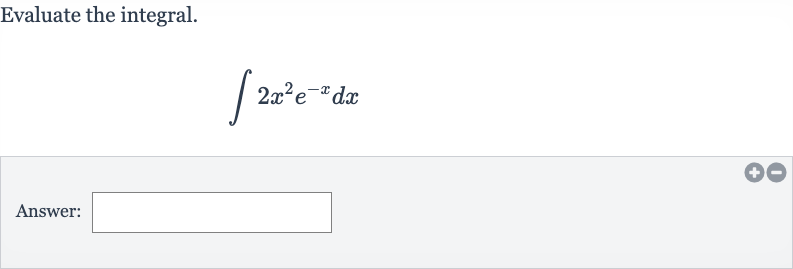AI tutor
Full solution
Q. Evaluate the integral.Answer:
- Choose and : Let's use integration by parts to solve the integral of with respect to . Integration by parts is given by the formula , where and are parts of the integrand that we choose. We will let and . Then we need to find and .First, we calculate by differentiating with respect to :.Next, we find by integrating :.To integrate , we use the fact that the integral of is , so:.
- Apply integration by parts: Now that we have , , , and , we can apply the integration by parts formula:We now have a new integral to solve, which is . We will use integration by parts again for this new integral.
- New integral to solve: For the new integral , we will let and . Then we need to find and .First, we calculate by differentiating with respect to :.Next, we find by integrating :.To integrate , we use the fact that the integral of is , so:.
- Apply integration by parts again: Now we apply the integration by parts formula to the new integral: = = .The remaining integral is straightforward to solve, as it is a constant multiple of the integral of , which is .
- Solve remaining integral: We integrate : Now we can combine all the parts we have integrated:
- Combine integrated parts: Simplify the expression by distributing the negative sign and combining like terms: .This is the antiderivative of the original integral. We also need to add the constant of integration, which we will denote as .
- Simplify expression: The final answer for the integral is: .

